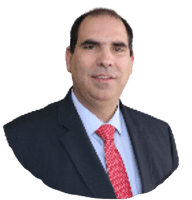Table of Contents
ToggleExplore how ESG principles are reshaping the way organizations acquire, track, and report fixed assets — from compliance to climate risk
ESG in fixed asset management is no longer a trend — it’s a strategic necessity. From carbon-intensive machinery to energy-inefficient buildings, the environmental footprint of assets has become a central concern for regulators, investors, and internal audit teams alike. And that’s just the “E”.
As global organizations face rising pressure to prove their ESG performance, fixed assets are in the spotlight. These assets are not just financial entries — they are physical, operational, and reputational risk centers. That’s why leading companies are adopting smarter asset strategies aligned with ESG standards, ensuring transparency, traceability, and long-term value.
In this article, you’ll discover:
- What ESG means in the context of asset lifecycle management;
- How ESG impacts decisions around acquisition, use, and disposal of fixed assets;
- Which frameworks (like ISSB and GRESB) are guiding ESG-aligned asset reporting;
- How emerging technologies, including AI, are driving data-based ESG insights;
- And why ignoring ESG today could cost your business tomorrow.

What ESG Means for Fixed Asset Management
Understanding ESG in fixed asset management begins with a shift in mindset: from cost and depreciation to impact and accountability.
Traditionally, fixed assets have been viewed primarily through a financial lens — as capital expenditures tracked on balance sheets. But ESG transforms that view. It introduces a broader perspective that evaluates each asset based not only on its book value, but also on how it affects people, the planet, and the business’s long-term governance.
Here’s how each ESG pillar connects directly to fixed asset practices:
Environmental (E)
- Carbon emissions from machinery, equipment, and real estate
- Energy efficiency of assets like HVAC, vehicles, or lighting systems
- Waste management and end-of-life disposal practices
- Sourcing of sustainable materials during acquisition or upgrades
Social (S)
- Worker safety in operational environments
- Accessibility and inclusivity in buildings and infrastructure
- Community impact of asset locations (e.g., noise, zoning, public space use)
- Supply chain ethics in procurement of asset components
Governance (G)
- Audit readiness and transparent asset tracking
- Compliance with ESG-related disclosure frameworks (e.g., ISSB, GRESB)
- Lifecycle documentation and controls to reduce risks of loss, fraud, or inefficiency
- Alignment with internal ESG goals and corporate responsibility standards
By integrating ESG into the asset lifecycle — from acquisition to retirement — companies gain not only operational efficiency but also enhanced reputation, investor confidence, and regulatory resilience.
The ESG Frameworks Guiding Asset Management Standards
To ensure effective ESG integration in fixed asset management, organizations must follow internationally recognized frameworks. These standards help companies evaluate, document, and report the environmental and social impact of their assets — from factories and warehouses to machinery and data centers.
Let’s explore the most relevant ESG frameworks shaping asset management today:
ISSB: A Global Baseline for ESG Reporting
The International Sustainability Standards Board (ISSB) has established a unified global framework that helps companies disclose material ESG risks. It requires organizations to evaluate how sustainability factors — like climate change and resource use — impact their business model and operations, including their fixed assets.
Assets such as real estate, industrial equipment, and IT infrastructure are increasingly being assessed not just for financial depreciation, but for their exposure to climate risk, transition risk, and physical vulnerabilities. Companies using ISSB standards are better equipped to anticipate asset impairments caused by environmental factors.
SASB: Industry-Specific Asset Considerations
The Sustainability Accounting Standards Board (SASB) provides industry-specific guidance — for example, how manufacturing firms should assess energy efficiency in machinery, or how logistics companies should monitor the carbon footprint of their fleet. This level of detail supports more accurate ESG valuation across fixed assets.
By aligning asset management practices with SASB standards, companies can strengthen audit reliability and investor communication.
Explore the SASB standards by sector
GRESB: ESG Benchmarking for Real Assets
The Global Real Estate Sustainability Benchmark (GRESB) focuses on evaluating ESG performance in physical assets like buildings and infrastructure. It’s used globally by institutional investors to assess how well asset managers are integrating sustainability into real estate portfolios.
GRESB scores can directly influence asset valuation, acquisition decisions, and financing terms. Facilities that rank poorly may be seen as higher risk.
Visit the official GRESB site
📌 According to Financial News London, institutional investors like Legal & General are increasingly integrating ESG risk analysis into stewardship of corporate assets — using frameworks like GRESB to pressure companies into improving physical asset sustainability (source).Institutional investors, such as Legal & General, are increasingly incorporating ESG risk analysis into their management of corporate assets. They leverage frameworks like GRESB to encourage companies to enhance the sustainability of their physical assets, as reported by Financial News London.

How Technology Powers ESG in Fixed Asset Management
Technology is the game changer in ESG-driven asset management. While frameworks like ISSB and GRESB define what to report, it’s technologies like RFID, AI, and predictive analytics make reporting accurate, automated, and scalable.
Let’s look at how these innovations support ESG outcomes:
RFID for Real-Time Visibility and Traceability
Radio Frequency Identification (RFID) tags allow companies to track every asset across its lifecycle — from acquisition to disposal — in real time. This means organizations can monitor:
- Energy-intensive machinery usage
- Location and movement of high-emission equipment
- Scheduled maintenance and compliance timelines
With RFID portals installed at strategic points, businesses can generate automatic logs that support ESG audits, reduce human error, and improve asset circularity (reuse, refurbishment, recycling).
Artificial Intelligence for Predictive Sustainability
AI goes beyond tracking — it predicts. By analyzing performance data, AI tools can:
- Identify assets with high environmental impact
- Recommend replacement timelines for inefficient equipment
- Anticipate asset failure to prevent costly downtime or emissions
Incorporating AI into fixed asset systems enables ESG-aligned decision-making, especially for large operations managing thousands of items. It’s not just about cutting costs — it’s about reducing footprint while boosting efficiency.
Advanced Analytics for ESG Reporting
Big data and analytics platforms consolidate information from multiple systems (ERP, WMS, RFID) to generate real-time dashboards. These help ESG leaders answer questions like:
- Which assets are out of compliance?
- What’s the cumulative carbon footprint per site?
- How is asset usage affecting workplace safety metrics?
This level of insight makes ESG not a box-checking exercise, but a strategic lever for risk mitigation and business growth.
📌 According to a recent Financial News article, institutional investors, particularly those with infrastructure and real estate portfolios, are increasingly adopting AI-powered ESG analysis. Companies that do not invest in this convergence risk falling behind.
The Hidden Risks of ESG in Asset Management — and How to Avoid Them
While ESG offers a path toward more sustainable and responsible operations, it’s not without its challenges. In the context of fixed asset management, companies often face hidden risks that can compromise both their compliance and credibility.
Understanding these pitfalls is essential for building a robust, verifiable ESG strategy.
Greenwashing: Appearances Without Substance
One of the biggest threats to ESG credibility is greenwashing — when companies label assets or practices as “sustainable” without real data to support those claims.
In May 2025, The Guardian revealed that several “green” investment funds in Europe held significant stakes in fossil fuel companies, triggering criticism over ESG transparency and investor trust.
In fixed asset management, this can happen when:
- Companies fail to track the real environmental impact of equipment
- Assets are reported as “green” based on outdated or incomplete assessments
- Disposal of obsolete assets doesn’t follow proper environmental protocols
How to avoid it: Use RFID and audit-ready software to document sustainability metrics — from energy usage to disposal methods. Always cross-reference ESG claims with real-time data.
Lack of Lifecycle Governance
Even with ESG goals in place, many organizations still manage assets through fragmented systems. This can lead to:
- Missed maintenance deadlines
- Untracked carbon-intensive usage
- Inaccurate reporting across departments or subsidiaries
These gaps increase exposure to regulatory penalties and reputational damage — especially as ESG regulations like the SFDR and CSRD become more demanding in the EU.
How to avoid it: Standardize your asset governance policies across regions. Integrate technology (RFID, WMS, ERP) to automate asset lifecycle oversight.
Underestimating Audit Complexity
As ESG audits become more detailed, organizations must prove how each asset contributes (or fails to contribute) to sustainability goals. Without a solid asset policy in place, ESG audit readiness becomes nearly impossible.
Even small inconsistencies — like mismatched asset locations or missing maintenance logs — can raise red flags during investor or regulatory reviews.
How to avoid it: Align your internal controls with ISSB and SASB reporting requirements. Ensure data is centralized, structured, and accessible.
Strategic ESG Integration with CPCON’s Fixed Asset Solutions
At CPCON, we understand that ESG is no longer a side initiative — it’s a core driver of risk management, operational excellence, and long-term value.
That’s why we deliver integrated solutions that help companies embed ESG principles into every stage of their asset lifecycle. From acquisition to retirement, our services give you visibility, control, and compliance — without complexity.
Our fixed asset solutions support ESG by offering:
- RFID-enabled asset traceability, improving environmental data collection
- Audit-ready asset registries aligned with ISSB, GRESB, and SASB frameworks
- Lifecycle tracking tools to reduce environmental impact and extend asset life
- Risk analytics and valuation services for strategic decision-making
- Custom systems integration with ERP, WMS, and sustainability dashboards
- Advisory services to help define ESG-aligned asset policies and reporting structures
We don’t offer one-size-fits-all checklists. We design scalable systems tailored to the size, sector, and sustainability goals of your business — across multiple geographies.
Whether you manage a network of warehouses, a fleet of vehicles, or thousands of IT assets, CPCON helps you turn ESG from a reporting burden into a competitive advantage.
ESG in Fixed Asset Management Is a Business Imperative
ESG in fixed asset management is no longer about staying ahead of the curve — it’s about staying in the game. As global standards evolve and stakeholders demand transparency, organizations must adopt ESG-driven practices that go beyond financial control.
By integrating frameworks like ISSB and GRESB, applying technologies like RFID and AI, and avoiding risks like greenwashing, companies can transform asset management into a lever for sustainability, compliance, and performance.
And with a strategic partner like CPCON, that transformation becomes not only possible — it becomes scalable, secure, and future-ready.
Ready to make your asset management ESG-compliant and audit-ready?
Let’s talk about how CPCON can help you gain control, visibility, and value at every step.
👉 Contact our team today to get started.
FAQ
What is ESG in fixed asset management?
ESG in fixed asset management refers to the integration of environmental, social, and governance criteria into the way companies acquire, operate, track, and dispose of long-term assets. It goes beyond financial accounting — focusing on how assets impact carbon emissions, safety, and compliance.
Why is ESG relevant to fixed asset lifecycle decisions?
Because every phase of the asset lifecycle — from procurement and use to retirement — carries environmental and social implications. ESG practices help companies reduce waste, lower energy costs, improve safety, and comply with new reporting regulations.
Which ESG frameworks apply to asset management?
The most relevant frameworks include:
- ISSB (International Sustainability Standards Board)
- SASB (Sustainability Accounting Standards Board)
- GRESB (Global Real Estate Sustainability Benchmark)
These frameworks help standardize how companies assess and report ESG performance related to their assets.
How can technology improve ESG performance in asset management?
Technologies like RFID, AI, and data analytics provide real-time tracking, predictive maintenance, and automated ESG reporting. They reduce manual effort and improve data accuracy — making ESG goals measurable and actionable.
What are the risks of poor ESG compliance in fixed asset management?
Failing to manage ESG in asset practices can result in:
- Regulatory penalties
- Reputational damage due to greenwashing
- Missed audit deadlines
- Financial loss from inefficient or non-compliant assets
To avoid these risks, companies must build ESG into asset policies, governance, and systems.
Get to Know CPCON Group: A global expert in asset management and inventory solutions
CPCON Group is a global leader in asset management, fixed asset control, and RFID technology. With over 25 years of experience, we have supported major companies such as Nestlé, Pfizer, Scania, BASF, Coca-Cola Andina, Vale, Vivo, Petrobras, and Caixa in high-complexity projects.
Curious about our global footprint? We are present in:
- North America: Toronto, New York, Miami, Minneapolis, Seattle, Dallas
- Latin America: São Paulo, Buenos Aires, Lima, Bogotá, Mexico City
- Europe: Lisbon, Porto, London, Birmingham, Milan, Rome, Turin, Madrid, Bilbao
- Middle East: Dubai, Saudi Arabi
- Caribbean: Tortola, Grand Cayman
Follow our LinkedIn Showcase Page and stay updated with strategic content on asset control, inventory management, and RFID innovation across industries.
This article explores how ESG in fixed asset management is transforming the way global companies handle their long-term assets. It explains how environmental, social, and governance principles are reshaping asset decisions — from acquisition to disposal — and highlights the frameworks that guide ESG compliance, such as ISSB, SASB, and GRESB. The piece also shows how technologies like RFID and AI empower organizations to automate reporting, reduce risks, and gain real-time visibility. In addition, it outlines the main pitfalls, including greenwashing and poor audit readiness, and presents CPCON’s strategic solutions for ESG-aligned asset governance across complex, global operations.























